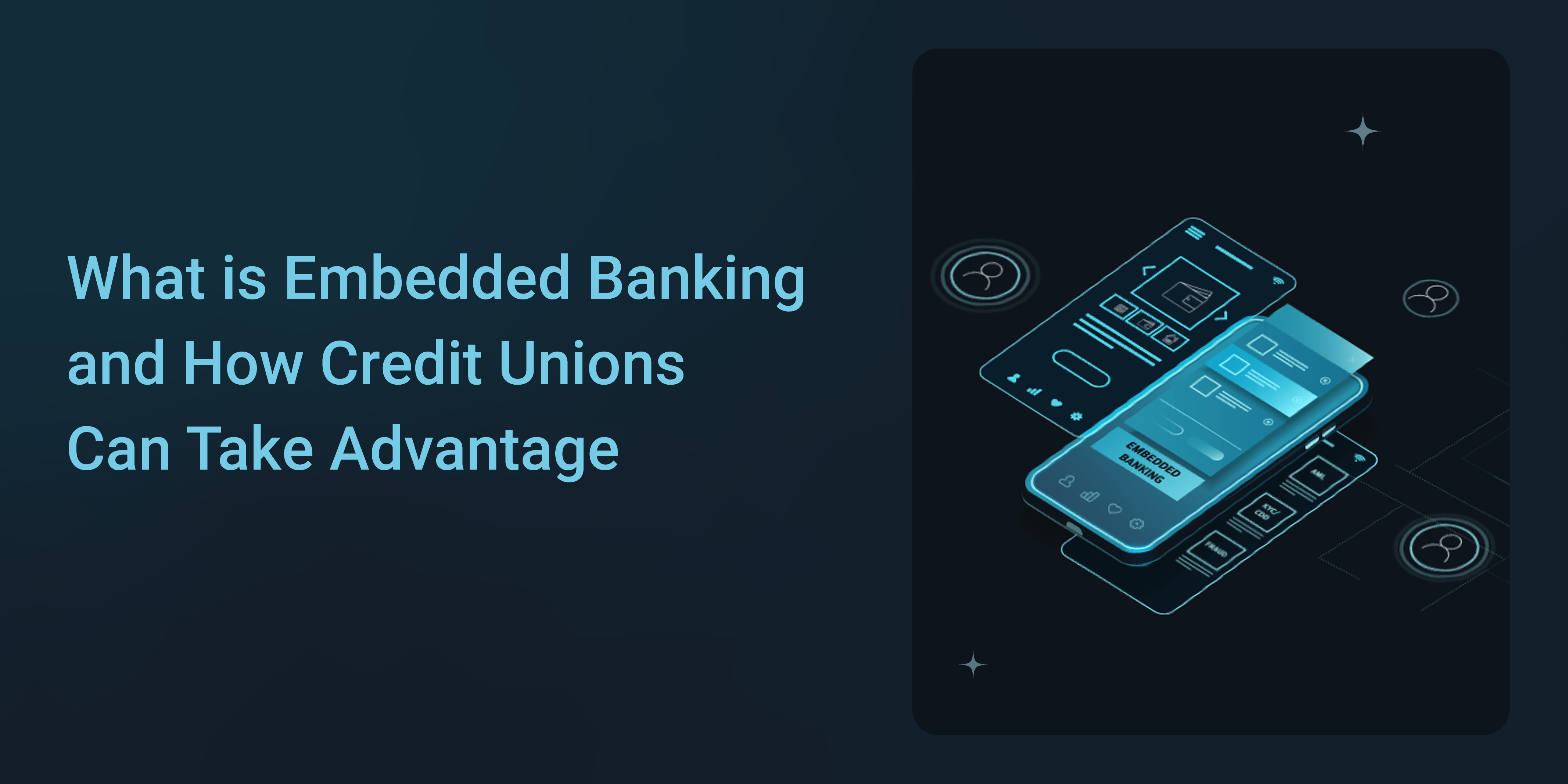What is Embedded Banking and How Credit Unions Can Take Advantage
The financial sector is witnessing a significant shift with the emergence of embedded banking that offers an opportunity for credit unions to win over market share. Embedded banking integrates banking services into non-financial digital platforms, offering a more efficient way to manage financial transactions. While closely related to (or perhaps a subset of) embedded finance, embedded banking focuses less on enabling purchases and more on streamlining funds flows and making it easier for customers to access and use their money. It also opens doors for innovative and personalized financial solutions.
For instance, with traditional banking, eCommerce sellers that rely on platforms like PayPal for payment processing may not be able to access their funds immediately; instead, they have to log into their PayPal account and initiate a transfer to their bank. With embedded banking, their eCommerce platform could process transactions directly and send the money straight to the seller's bank account.
How Can Credit Unions Take Advantage of Embedded Banking?
For credit unions, embedded finance allows them to develop new growth avenues and revenue sources without impacting their core competency. Their customer-centric approach is a strategic advantage when it comes to forming embedded finance partnerships with digital solutions providers.
Credit unions are known for their commitment to serving members' financial needs and generally providing a higher level of service than traditional banks – particularly larger ones. This makes credit unions attractive options for fintechs and other digital platforms looking for banking partners they can trust and build long-term relationships with. Not only can they trust the credit union to provide good support to their customers, but they can also count on having an easy-to-work-with partner on the backend who will work hard to make the partnership successful.
The potential benefits of embedded banking partnerships for credit unions are multiple. Depending on the arrangement, the credit union could get an increase in members or deposits, increased customer loyalty, free marketing, and income from revenue shares, processing fees, or fixed partnership payments.
What Could an Embedded Banking Partnership Look Like?
For credit unions that serve a specific profession, such as teachers or firefighters, embedded banking offers the opportunity to increase their visibility in their particular niche. For example, a credit union that serves firefighters could partner with a specialized vendor like The Fire Store to be their banking partner.
In this relationship, the vendor could become the credit union's customer while also offering discounts and/or loyalty rewards points to credit union members who pay for their purchases directly through the embedded banking integration. At the same time, any supplier that is also a credit union member could elect to have their revenue share sent directly to their account (or get an automatic deposit when the vendor orders more of their products).
This partnership would not only lead to an increase in transaction volumes that the credit union processes but also increase its visibility among its target customers and likely drive an increase in memberships and any revenue generated from the partnership agreement.
Why Credit Unions Shouldn't Jump Straight In
While embedded banking partnerships offer significant benefits for credit unions, it's important to know the potential implementation challenges before starting a partnership program. Any embedded banking implementation will need to have the same security and reliability standards as any other digital banking experience, which may end up being more time- and resource-intensive than expected.
Credit unions with limited (or nonexistent) experience with embedded finance, would be best served by first choosing partners with proven implementation capabilities. For credit unions that need to be more technologically sophisticated, a simpler solution-based partnership with a fintech may be a better starting point for their digital transformation journey.
At Torpago, we help credit unions and community banks improve their digital banking experience by providing white-label solutions for credit card programs. Our experienced teams work closely with our partners to integrate our software with their systems and help them become comfortable setting up and maintaining third-party integrations, helping them build the expertise they need to develop additional partnerships. Begin your institution's digital transformation journey today and level up your credit card experience – request a demo of our PoweredBy Solutions to get started!


